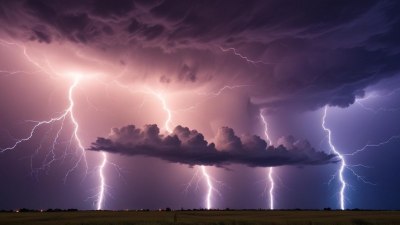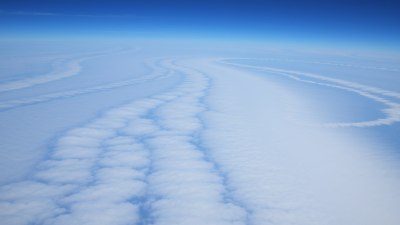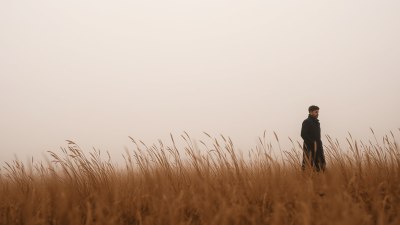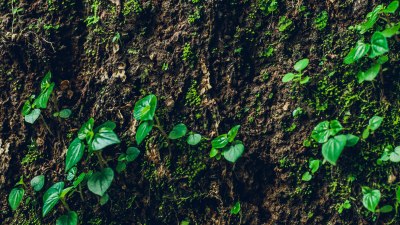The Science Behind the First Frost and What It Means for Ecosystems
Explore the science of first frost and its ecological impact on plants and animals.
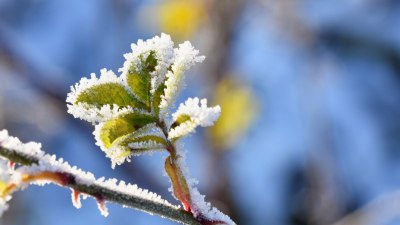
Image by montypeter on Freepik
The first frost of the season is a significant event in many ecosystems, marking the transition from the warm, active growing season to the colder months of dormancy. This phenomenon isn't just a change in weather; it has profound implications for various biological processes and interactions within the ecosystem. Understanding the science behind the first frost involves delving into meteorological factors, the physiological responses of organisms, and the overall implications for biodiversity and ecosystem health.
Understanding Frost
Frost occurs when temperatures drop to the point where moisture in the air condenses and freezes, forming ice crystals on surfaces. This typically happens during the night when skies are clear, allowing heat to escape from the earth at a faster rate. The formation of frost is influenced by several factors, including humidity, temperature, and wind conditions. In temperate regions, the first frost can signal the end of the growing season for many plants, completing their lifecycle before winter.
Effects on Plant Life
For plants, the first frost can be devastating or merely a natural signal of dormancy. Many perennial plants have adaptations that enable them to withstand the chill, while annuals, which complete their life cycle in one growing season, may perish. The sensitivity of plants to frost varies widely; some flowers and vegetables, like tomatoes and peppers, are highly susceptible, while others, like kale and certain types of cabbage, can thrive even after frost sets in.
When frost forms, ice crystals penetrate plant tissues, causing cell membranes to rupture. This leads to irreversible damage, often resulting in wilting and brown, mushy tissue. However, certain plants employ various strategies to survive these conditions, including developing antifreeze proteins that prevent ice crystal formation within their cells. The ability to adapt to frost conditions is vital for plant species, enabling them to survive and reproduce in climates that experience regular freezing temperatures.
The Role of Frost in Ecological Dynamics
Frost acts as a reset button for ecosystems. It helps regulate plant populations by eliminating those that cannot adapt to changing conditions. This reduction in vegetation not only affects plants but also has ripple effects throughout the food web. Herbivores depend on specific plants for sustenance. When frost destroys some of these plants, it can lead to population declines among herbivores, which in turn affects predators that rely on them for food.
Furthermore, frost can influence seed germination and the timing of flowering. Many plants require a period of cold, known as vernalization, before they can flower. This cold period can result from the first frost, as it signals to the plants that they have experienced the chilling necessary for their reproductive cycle.
Impact on Animal Life
As the first frost descends, animal behavior changes drastically. Many animals begin preparations for winter, either by migrating to warmer climates or entering hibernation. Migratory birds, for instance, often take cues from temperature shifts and changing food availability to time their migration. The first frost can signal birds to move to warmer regions before the harsher winter conditions arrive, ensuring their survival when food becomes scarce.
Hibernating species, such as bears and certain rodents, also rely on environmental cues to initiate their hibernation cycle. A sudden drop in temperature can prompt these animals to find a suitable den where they can weather the winter months. Understanding these patterns is crucial for wildlife management and conservation efforts, particularly as climate change continues to affect temperature patterns and shift traditional frost dates.
Frost and Ecosystem Services
Frost plays a vital role in maintaining ecosystem services. For instance, it can help control pests and diseases by freezing pathogens and insect populations that thrive during warmer months. This natural pest management can reduce the need for chemical interventions, benefiting both the environment and agricultural practices. By regulating the life cycles of certain species, frost ensures a balance within the ecosystem, supporting biodiversity.
Moreover, the frost can enhance soil conditions for the upcoming growing season. As frozen ground thaws in spring, it allows for better water infiltration and aeration, promoting root growth in plants. This cycle is essential for maintaining healthy agricultural landscapes, as well as natural ecosystems that rely on healthy soil dynamics.
Climate Change and Shifting Frost Dates
With ongoing climate change, the timing of the first frost is shifting in many areas. Warmer winters mean that frost may arrive later or be less severe than in past decades, leading to prolonged growing seasons for some plants. While this may initially seem beneficial for agriculture, it can disrupt the delicate timing between plant and pollinator life cycles, potentially leading to mismatches that threaten food production and biodiversity.
Additionally, milder winters may allow for invasive species to thrive, further complicating the ecological balance. These species often outcompete native flora and fauna, leading to declines in local biodiversity and altering ecosystem functions. As such, understanding the implications of altered frost patterns is critical for conservation strategies and agricultural planning.
The first frost is a pivotal moment in the seasonal cycle, affecting everything from plant physiology and animal behavior to ecosystem dynamics and services. By understanding its scientific underpinnings, we can better appreciate the intricate web of life that relies on these climatic milestones. As we face a changing climate, monitoring and adapting to shifts in frost patterns will be vital in preserving our ecosystems and the biodiversity they support.


